Are you a Quiet Speculation member?
If not, now is a perfect time to join up! Our powerful tools, breaking-news analysis, and exclusive Discord channel will make sure you stay up to date and ahead of the curve.
With Humans the de facto best deck in the format, now's an exciting time to be interacting in Modern. The control renaissance offers players plenty of options when it comes to picking their poison. Whether they're zapping Champion of the Parish with Lightning Bolt or Fatal Push, or closing out games with Tarmogoyf or Celestial Colonnade, interaction lovers of all taste profiles are likely to find something for them in Modern. Doing so effectively depends on understanding the roles available choices play in the metagame and the relation of each deck to the others.
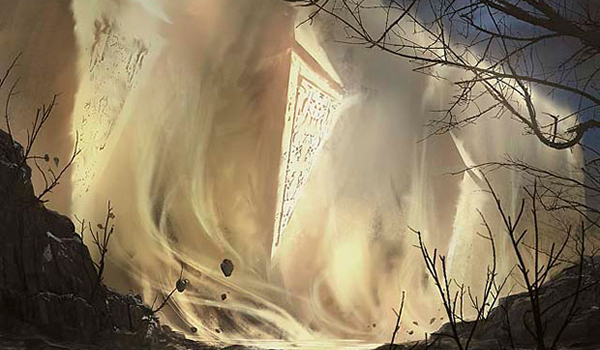
This article provides a basic framework for Modern's top-performing interactive decks with the aim of guiding players toward the kill-spell shell best suited to their preferences.
Decade of Aggression
Current interactive figureheads can be elegantly sorted by levels of aggression. The raw proactivity of each is more of an open question—who's to say whether chaining attacks after stabilizing is more proactive than winning just as fast with Bolt-Snap-Bolt? But aggression focuses on how quickly the deck begins closing out the game, or in practical terms, attacking. This more specific metric is useful for matching preference with playstyle, and gives us a tangible benchmark to sort the decks by.

A notable takeaway from this table: the aggressive interactive decks trend towards employing Tarmogoyf and targeted discard, while the more reactive ones trend towards Snapcaster Mage and permission. Targeted discard excels at clearing a path for functional Goyfs, meaning unconditional, cheap creatures that put a squeeze on opponents in some way to enable quick wins and buff a deck's reversibility. Meanwhile, countermagic better supports Snapcaster Mage, which interacts with topdecks (cards found later in the game than those hit by targeted discard).
Traverse Shadow
Traverse Shadow triples up on functional Goyfs, with Death's Shadow and Traverse the Ulvenwald serving as additional copies of the infamous beater. The deck is so streamlined precisely to ensure the kind of no-strings-attached aggression so many Goyfs provide, which lets Traverse Shadow get under the big mana decks that have traditionally hassled interactive strategies in Modern.
Traverse Shadow, by IBEME (5-0)
Configuration
Traverse Shadow runs a mere one to two basic lands, supporting a precarious manabase with Traverse the Ulvenwald and a bulky suite of free cantrips. The cantrips play another role, too, in buffing the deck's Goyfs and rushing them out with formidable bodies. Its gameplan tends to play out thusly: destabilize opponents with discard and removal, land a clock, and then protect a key attack or two with Stubborn Denial, or cheese a win with Temur Battle Rage.
Strengths
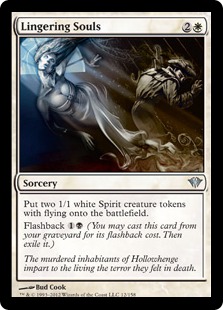 A huge draw to Traverse Shadow is the deck's eminent customizability. Players can splash white for Lingering Souls or Ranger of Eos, forego blue altogether and play three colors, pack bullets like Grim Flayer or Ghor-Clan Rampager to staple additional utility onto Traverse, or dip into efficient delirium enablers like Tarfire or Architects of Will if they prefer more consistency. The very nature of Tarmogoyf, Modern's most flexible combat creature, is at play here, and Traverse Shadow's got all the reversibility of the infamous beater it's built around. Deckbuilders can easily prioritize one end of the aggressiveness spectrum over another by ramping up on Temur Battle Rage instead of the aforementioned midrange options.
A huge draw to Traverse Shadow is the deck's eminent customizability. Players can splash white for Lingering Souls or Ranger of Eos, forego blue altogether and play three colors, pack bullets like Grim Flayer or Ghor-Clan Rampager to staple additional utility onto Traverse, or dip into efficient delirium enablers like Tarfire or Architects of Will if they prefer more consistency. The very nature of Tarmogoyf, Modern's most flexible combat creature, is at play here, and Traverse Shadow's got all the reversibility of the infamous beater it's built around. Deckbuilders can easily prioritize one end of the aggressiveness spectrum over another by ramping up on Temur Battle Rage instead of the aforementioned midrange options.
Weaknesses
While it could be construed as a strength by those who like the challenge, Traverse Shadow is hugely difficult to play. The deck boasts a high skill ceiling thanks to the difficult sequencing decisions it offers pilots at nearly every turn cycle of the game, not to mention the skill involved in micro-managing a resource few Magic decks take full advantage of: life total. Its notorious difficulty has led Reid Duke to characterize Shadow as an ideal Modern deck for experts.
For an obvious example of this difficulty, Shadow players must walk a fine line against Lightning Bolt decks where they stay at, or can reach on demand, nine life or less (so that Shadow doesn't die to the instant); nine's also a precarious total against Bolt-Snap-Bolt decks, which can then put games away out of nowhere and without even attacking. Navigating such tension is standard fare for Traverse Shadow players.
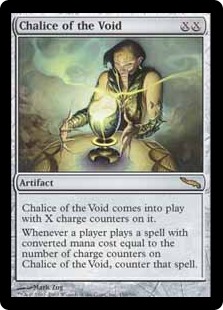 Even skilled pilots must find remedies to the deck's strategic weakness: its fragility. Being highly proactive, highly interactive, and highly consistent all at once does come with a cost, and in Shadow's case, it's a pronounced weakness to hosers. Chalice of the Void, Blood Moon, and Rest in Peace all do numbers on this deck, as do speed bumps like Runed Halo or Reflector Mage. When a deck has so few actual threats, cutting one off for an extended period of time hampers it tremendously.
Even skilled pilots must find remedies to the deck's strategic weakness: its fragility. Being highly proactive, highly interactive, and highly consistent all at once does come with a cost, and in Shadow's case, it's a pronounced weakness to hosers. Chalice of the Void, Blood Moon, and Rest in Peace all do numbers on this deck, as do speed bumps like Runed Halo or Reflector Mage. When a deck has so few actual threats, cutting one off for an extended period of time hampers it tremendously.
Of course, there are ways around the hate. But since so much of the available answers in Modern shine against Traverse Shadow, pilots must stay on their toes and familiarize themselves with the play patterns against each. Some matchups even require balancing between beating multiple lock effects!
Jund
Perhaps Modern's best-known interactive deck, Jund recently got one of its favorite creatures back: Bloodbraid Elf. The card's release resulted in a BGx comeback that may have helped propel the bigger interactive decks to Modern success.
Jund, by Victor Wood (3rd, SCG Minneapolis)
Configuration
Jund's got loads of lands, which allows Raging Ravine to finish the game after players exchange resources and improves mana-hungry creatures like Scavenging Ooze and Bloodbraid Elf. It also allows Jund to hit its perfect curve of discard, Goyf, Liliana more often; this deck does not want to be stuck on two mana. Bloodbraid Elf gives the deck some much-needed velocity and helps sift past extra lands in the mid-game. Jund tends to run 13-15 creatures and four to five walkers.
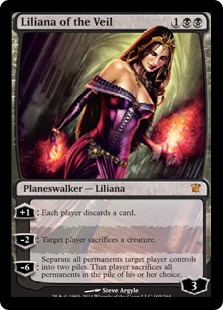 Strengths
Strengths
Elf is a huge addition to this deck, giving it more mid-game power and letting Jund come back from behind. It functions as Snapcaster Mage does for the more aggressive blue decks, and can also be played both ways, although Snap is a bit better on defense thanks to flash. Still, Snapcaster won't ever make a Liliana of the Veil.
Weaknesses
Jund's biggest weakness is that it's "too fair"—successful Modern decks in this era often cheat on resources, especially mana, and Jund doesn't do too much of that. As such, creature decks bending the mana rules, like Eldrazi and Hollow One, are natural favorites against Jund. Jund's also weak to decks that go over it, as it's not quite proactive enough to reliably pressure Tron. Against these strategies, the deck can feel very underwhelming. It shines brightest against small creature decks, which it picks apart with extreme prejudice.
Grixis Shadow
This Shadow deck is much less focused on powering out its namesake than Traverse Shadow, preferring to play a reactive game that extracts value from Snapcaster Mage as it disrupts opposing plays and holds down the battlefield with delve threats.
Grixis Shadow, by Scott Markeson (17th, SCG Minneapolis)
Configuration
The free cantrips come out of Traverse Shadow in favor of Thought Scour, a more expensive analogue that enables the delve threats. These creatures remain powerhouses even after Rest in Peace comes down (so long as they're already on the battlefield), and can cost as little as one mana with enough in the graveyard, while Goyf always costs two. But since they require setup, they're inherently less aggressive. Scott's build employs Lightning Bolt alongside Snapcaster to play a more traditional URx game against Humans.
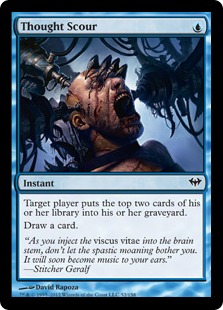 Strengths
Strengths
Like its cousin, Grixis Shadow is fairly customizable, if not as much as Traverse. It plays Shadow more as a late-game win condition than as another threat for opponents to deal with quickly, and so is more reactive than Traverse Shadow. Players who like the card, or supplementing permission with discard, but prefer a slower or more value-centric gameplan, are likely to enjoy Grixis Shadow. Serum Visions ensures this deck is more well-rounded than Traverse Shadow, and allows it to run more noncreature bullets in the sideboard.
Weaknesses
That consistency and reliability doesn't come free: Grixis Shadow is much slower than Traverse Shadow, which can prove problematic in race-based matchups, including Tron. Notably, its Temur Battle Rages get significantly worse when they grow a 5/5 or 4/5 than when pointed at a 6/7. Grixis is better against Blood Moon (three colors) and Rest in Peace (Young Pyromancer Plan B), but softer to Chalice without access to Ancient Grudge.
Mardu Pyromancer
Mardu's right in the middle of the above table, but it doesn't play exactly Tarmogoyf or Snapcaster Mage. Still, it manages to offer players something of an intermediary playstyle between the two camps.
Mardu Pyromancer, by Cameron Rolen (9th, SCG Minneapolis)
Configuration
A black-red deck at heart, Mardu only splashes white in the mainboard for Lingering Souls, which can also be cast out of the graveyard thanks to Faithless Looting, the deck's primary filtering engine. Subsequently, it gets to play Blood Moon main, which is great at supporting its pressure.
 That pressure is often supplied by Young Pyromancer, the deck's Tarmogoyf analogue. Mardu also boasts a Snapcaster analogue in Bedlam Reveler, a creature it uses to pull ahead in midrange mirrors. Kolaghan's Command returns these two creatures to the hand from the graveyard, negating the need for more threats in the main besides Lingering Souls, which plays multiple roles.
That pressure is often supplied by Young Pyromancer, the deck's Tarmogoyf analogue. Mardu also boasts a Snapcaster analogue in Bedlam Reveler, a creature it uses to pull ahead in midrange mirrors. Kolaghan's Command returns these two creatures to the hand from the graveyard, negating the need for more threats in the main besides Lingering Souls, which plays multiple roles.
Of course, with just Looting to find its pieces, Mardu usually ends up playing whatever game its draws tell it to. It doesn't have control over its threats like the Shadow decks, nor a critical mass of similar ones like Jund. Spell-slingers looking for a varied experience across many matches (i.e. Commander lovers) may be drawn to this aspect of the deck.
Strengths
Mardu's biggest strength is its power in midrange mirrors. The value generated by Bedlam Reveler is tough for any interactive deck to beat, including the Snapcaster decks; among those, only the hoser-packed UW Control can reliably trounce Mardu.
Weaknesses
Highly proactive decks can get under Mardu despite its heavy removal suite, since the deck is just too clunky to always have what it needs at the right time. Decks going very big can also beat it, including UW and, of course, Tron. Graveyard hate also hurts this deck's Plan A significantly, requiring additional threats like Goblin Rabblemaster from the sideboard. Rest in Peace aside, the ubiquitous Nihil Spellbomb is particularly nasty against Bedlam Reveler.
Jeskai Control
Yes, Control—Spell Queller, go home!
Jeskai Control, by Jonathan Rosum (2nd, SCG Minneapolis)
Configuration
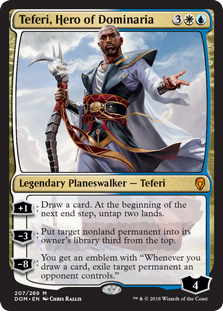 Newcomer Teferi, Hero of Dominaria does a lot for Jeskai's most reactive builds. David might have trouble crediting the deck's recent success to the arrival of one planeswalker, but I disagree—in my eyes, its success isn't so much a coincidence as the deck finally having enough of the pieces it needed to become a competitive staple in Modern. The other piece isn't Jace, the Mind Sculptor, but Search for Azcanta, an enchantment that's proved to be critical for blue reactive decks.
Newcomer Teferi, Hero of Dominaria does a lot for Jeskai's most reactive builds. David might have trouble crediting the deck's recent success to the arrival of one planeswalker, but I disagree—in my eyes, its success isn't so much a coincidence as the deck finally having enough of the pieces it needed to become a competitive staple in Modern. The other piece isn't Jace, the Mind Sculptor, but Search for Azcanta, an enchantment that's proved to be critical for blue reactive decks.
Jeskai Control runs very few creatures, preferring to put the game away with a Colonnade attack and some leftover burn spells. It's a through-and-through Cryptic Command deck, digging for the right pieces with Serum Visions to maintain control over the game at all times.
Strengths
One big strength of Jeskai is its reach. The deck packs plenty of burn spells, allowing it to close games seemingly out of nowhere and keeping opponents on their toes. It also gains a plethora of tools after sideboarding, ranging from Vendilion Clique to Elspeth, Sun's Champion. Finally, Search and Teferi give the deck enough cheap, repeatable card advantage engines that Jeskai can set up a means for plussing without tapping out into opposing shenanigans.
Weaknesses
All that value isn't enough to beat multiple Revelers, though, and faster decks don't care so much about facing down mid-game draw engines. Tron, too, poses problems for Jeskai. All that said, this deck is very well-rounded, and a fine option for players looking for a powerful reactive deck with a shot at beating everything. In other words, it's the "Humans" of interactive decks!
UW Control
UW Control dumbs down the Snap-Knot philosophy, cutting reach for hosers and value engines and gaining an edge in big mana and midrange matchups.
UW Control, by Noah Andrew (22nd, SCG Minneapolis)
Configuration
UW looks more like a Standard deck than a Modern one. It plays that way, too—no Bolt-Snap-Bolt here. UW wants to take over the game and eventually win the old-fashioned way: by turning permanents sideways, be they creatures, planeswalkers, or manlands.
Strengths
Creature decks of all sorts struggle to defeat UW. It's got Verdict for go-wide creature aggro and Gideon for those presenting individual threats, as well as Wall of Omens to hold the line early. Its array of hosers takes care of angles those creature decks might leverage to beat UW.
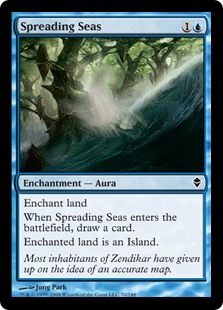 Those same hosers also give UW a favorable matchup profile against Tron, especially relative to that of other interactive decks. Maxing out on Spreading Seas and Field of Ruin helps defeat that deck, making UW appealing for control mages sick of turn three Karn.
Those same hosers also give UW a favorable matchup profile against Tron, especially relative to that of other interactive decks. Maxing out on Spreading Seas and Field of Ruin helps defeat that deck, making UW appealing for control mages sick of turn three Karn.
Weaknesses
UW is light on actual permission compared with other UWx decks, opening it up to certain combo strategies. Anyone who doesn't care about Path to Exile will have an okay time against UW. It runs into the same issue as Jund, too: it's a little fair for Modern. Missing red doesn't even let it cash in on one of the big draws to Snapcaster decks in Modern, Bolt-Snap-Bolt. The deck is also pretty sluggish, and sometimes goes to time during events.
An Embarrassment of Riches
Interactive mages have never had so many viable options to choose from in Modern. The tiered decks alone span an impressive range of aggressiveness values. Which do you prefer? Do you think there are more productive ways to break down Modern's interactive options? Let me know in the comments.


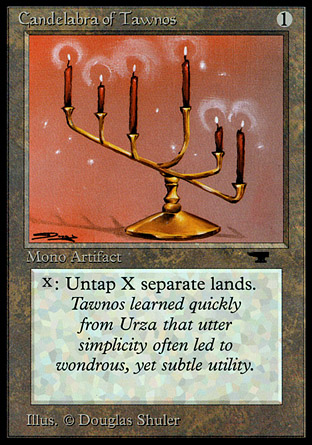



Good article! Small nitpick: You said Grixis Shadow doesn’t have access to Kommand, thought they usually run 2 copies in the 75.
Thanks fixed!